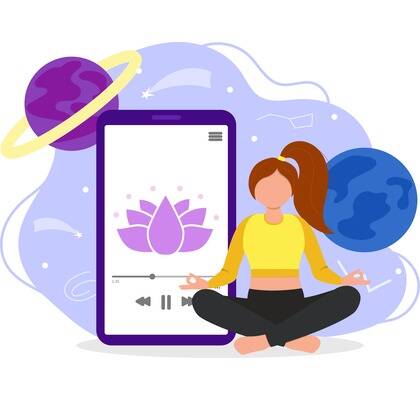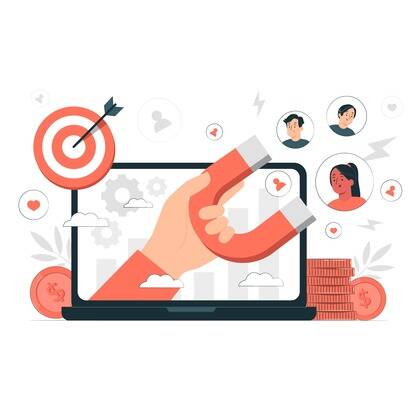Minimalism: Simplify Your Life and Find Inner Peace
In a world filled with constant distractions and overwhelming demands, many people are turning to minimalism as a way to simplify their lives and find inner peace. Minimalism is more than just decluttering your physical space; it’s a mindset and a lifestyle choice that encourages intentional living and focuses on what truly matters. By embracing minimalism, you can create a more meaningful and fulfilling life. This article explores the concept of minimalism and provides practical tips on how to incorporate it into your daily life. Minimalism offers a wide range of benefits that can positively impact various aspects of your life. By simplifying your life and letting go of unnecessary possessions, you can experience: One of the foundational aspects of minimalism is decluttering your physical space. This process involves assessing your belongings, sorting and organizing them, and letting go of unnecessary items. Here are some steps to get started: Take a thorough inventory of your possessions and evaluate their significance and usefulness. Ask yourself: Be honest with yourself and be willing to let go of items that no longer add value to your life. Categorize your belongings into groups such as keep, donate/sell, or discard. Use storage solutions like bins, baskets, and shelves to keep things organized. Ensure that the items you choose to keep have designated spaces in your home. Parting with possessions can be challenging, especially if you have sentimental attachments or fear of scarcity. Practice detachment and focus on the benefits of owning less. Consider donating or selling items to someone who will appreciate them more. In today’s digital age, minimalism extends beyond physical belongings and encompasses your online presence as well. Here are some tips to streamline your digital life: Review your social media accounts, email subscriptions, and online memberships. Unfollow or unsubscribe from accounts that no longer align with your values or interests. Limit your time spent on social media and prioritize genuine connections. Organize your digital files and folders in a logical and structured manner. Delete unnecessary files and back up important documents in secure cloud storage. Regularly clean up your inbox and unsubscribe from irrelevant newsletters. Set boundaries around your screen time to prevent digital overwhelm. Create tech-free zones or time blocks where you engage in offline activities such as reading, exercising, or spending time in nature. Minimalism is not just about physical possessions; it’s a mindset that can transform how you approach life. Here are key principles to embrace: Shift your focus from accumulating material possessions to collecting memorable experiences. Prioritize activities that bring joy, personal growth, and connection with others. Invest your time and resources in creating lasting memories. Nurture meaningful relationships and invest in personal growth. Surround yourself with people who inspire and support you on your journey towards a more purposeful life. Allocate time for self-reflection, learning, and pursuing your passions. Be present in the moment and cultivate gratitude for what you have. Slow down, appreciate the simple pleasures in life, and find contentment in the present. Practice mindfulness through meditation, journaling, or engaging in mindful activities like yoga or walking.
The more you have, the more you are occupied. The less you have, the more free you are.
– Mother Teresa To fully embrace minimalism, it’s important to incorporate minimalist habits into your daily life. Here are some areas where you can apply minimalism: Simplify your wardrobe by keeping only the clothing items that you love and wear regularly. Choose versatile pieces that can be mixed and matched. Consider adopting a capsule wardrobe approach to reduce decision fatigue. Streamline your meal planning and adopt mindful eating habits. Plan your meals in advance to minimize food waste and make healthier choices. Practice mindful eating by savoring each bite, focusing on the flavors and textures of your food. Create a minimalist and clutter-free living space by choosing quality over quantity when it comes to home decor. Opt for simple and functional furniture and decorations that bring you joy and serve a purpose. Clear countertops and open spaces promote a sense of calm. Minimalism and sustainability go hand in hand. By embracing minimalism, you can contribute to a more sustainable future. Here’s how: By consuming less and being more mindful of your purchases, you can reduce waste and minimize your environmental impact. Repair and repurpose items instead of automatically replacing them. Opt for reusable and eco-friendly alternatives. Invest in high-quality, durable products that are built to last. Avoid buying cheap, disposable items that contribute to landfill waste. By choosing quality over quantity, you not only reduce waste but also save money in the long run. Research and support brands that align with your values. Look for companies that prioritize ethical production, fair trade, and sustainable practices. By voting with your wallet, you can encourage more responsible and conscious business practices. Embarking on a minimalist lifestyle can come with its own set of challenges. Here are some common obstacles and how to overcome them: Letting go of sentimental items can be emotionally challenging. Take the time to reminisce and appreciate the memories associated with the item. Consider taking photos or creating a memory box to preserve the sentimental value without the physical clutter. Society often encourages materialism and consumerism. Stay true to your values and priorities, even if they differ from societal norms. Surround yourself with like-minded individuals who support and understand your minimalist choices. Minimalism is a journey, not a destination. Stay motivated by focusing on the benefits you experience along the way. Regularly reassess your goals and progress, and celebrate the milestones you achieve. Surround yourself with inspiration through books, podcasts, or documentaries. Minimalism offers a pathway to simplify your life and find inner peace in a world filled with distractions. By decluttering your physical and digital space, embracing a minimalist mindset, adopting minimalist habits, and considering sustainability, you can create a more intentional and fulfilling life. Embrace minimalism as a tool to focus on what truly matters and discover a sense of inner peace and contentment.Minimalism: Simplify Your Life and Find Inner Peace
The Benefits of Minimalism
Decluttering Your Physical Space
Assessing your belongings
Sorting and organizing
Letting go of unnecessary items
Streamlining Your Digital Life
Simplifying your online presence
Managing digital files and documents
Reducing screen time



Embracing Minimalist Mindset
Focusing on experiences over possessions
Prioritizing relationships and personal growth
Practicing mindfulness and gratitude
Creating Minimalist Habits
Adopting a minimalist wardrobe
Meal planning and mindful eating
Establishing a minimalist home decor
Minimalism and Sustainability
Reducing waste and consumption
Choosing quality over quantity
Supporting ethical and eco-friendly brands
Overcoming Challenges on the Minimalist Journey
Dealing with sentimental attachments
Managing societal pressure and expectations
Staying motivated and committed
Conclusion






































 Imagine a world where you can travel to exotic destinations, explore fantastical realms, or interact with virtual beings—all without leaving the comfort of your living room. Welcome to the captivating realm of virtual reality (VR). In this blog post, we will delve into the fascinating world of VR, exploring its applications, advancements, and the transformative impact it has on various industries and our daily lives.
Imagine a world where you can travel to exotic destinations, explore fantastical realms, or interact with virtual beings—all without leaving the comfort of your living room. Welcome to the captivating realm of virtual reality (VR). In this blog post, we will delve into the fascinating world of VR, exploring its applications, advancements, and the transformative impact it has on various industries and our daily lives.


 Virtual reality has also made a significant impact on education and training. VR simulations provide immersive and realistic environments for learning and skill development. Students can explore historical landmarks, dive into the depths of the ocean, or practice complex medical procedures—all within a virtual space. VR training programs have been adopted in fields such as aviation, healthcare, and military, allowing individuals to gain hands-on experience in a safe and controlled environment.
Virtual reality has also made a significant impact on education and training. VR simulations provide immersive and realistic environments for learning and skill development. Students can explore historical landmarks, dive into the depths of the ocean, or practice complex medical procedures—all within a virtual space. VR training programs have been adopted in fields such as aviation, healthcare, and military, allowing individuals to gain hands-on experience in a safe and controlled environment.

